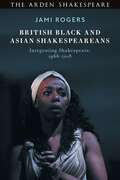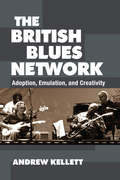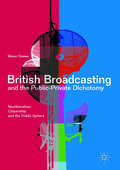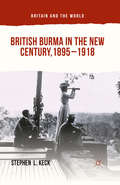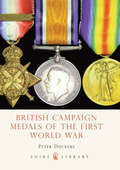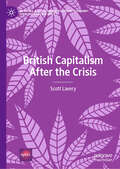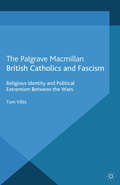- Table View
- List View
British Battleship vs Italian Battleship: The Mediterranean 1940–41 (Duel)
by Mark StilleDuring World War II's battle for control of the Mediterranean, both the British and Italian navies planned to bring their battle fleets into play. At the centre of both of these fleets was a core of battleships which both sides expected to play a decisive role in the conflict. On 9 July 1940, the two navies met in the central Mediterranean, as two Italian battleships faced off against three of their British counterparts. Christened the Battle of Calabria, the action allowed the ships to play to their strengths, engaging in a long-range gunnery duel, the very thing they had been designed for. Though both sides shot well, the only hit was scored by Warspite on the Italian battleship Giulio Cesare. The Italians were forced to withdraw, and the action ended up being indecisive, but it was the largest fleet action fought in the Mediterranean during the war. As well as this battle, there were other occasions during the war when both British and Italian battleships were present and influential, but during which they never engaged each other directly – the Battle of Spartivento on 27 November 1940, and the Battle of Cape Matapan on 28–29 March 1941.Packed with full-colour artwork, carefully selected archive photographs and expert analysis, this title explores in detail the role played by British and Italian battleships in these encounters, and their influence in the Mediterranean theatre of World War II.
British Battleship vs Italian Battleship: The Mediterranean 1940–41 (Duel #101)
by Mark StilleDuring World War II's battle for control of the Mediterranean, both the British and Italian navies planned to bring their battle fleets into play. At the centre of both of these fleets was a core of battleships which both sides expected to play a decisive role in the conflict. On 9 July 1940, the two navies met in the central Mediterranean, as two Italian battleships faced off against three of their British counterparts. Christened the Battle of Calabria, the action allowed the ships to play to their strengths, engaging in a long-range gunnery duel, the very thing they had been designed for. Though both sides shot well, the only hit was scored by Warspite on the Italian battleship Giulio Cesare. The Italians were forced to withdraw, and the action ended up being indecisive, but it was the largest fleet action fought in the Mediterranean during the war. As well as this battle, there were other occasions during the war when both British and Italian battleships were present and influential, but during which they never engaged each other directly – the Battle of Spartivento on 27 November 1940, and the Battle of Cape Matapan on 28–29 March 1941.Packed with full-colour artwork, carefully selected archive photographs and expert analysis, this title explores in detail the role played by British and Italian battleships in these encounters, and their influence in the Mediterranean theatre of World War II.
British Battleships 1890–1905: Victoria's steel battlefleet and the road to Dreadnought (New Vanguard)
by Angus KonstamThe term 'pre-dreadnought' was applied in retrospect, to describe the capital ships built during the decade and a half before the launch of HMS Dreadnought in 1906. At that moment these once great warships were rendered obsolete. However, until then, they were simply called 'battleships' and were unquestionably the most powerful warships of their day. These mighty warships represented the cutting edge of naval technology. The ugly ducklings of the ironclad era had been transformed into beautiful swans, albeit deadly ones.In Britain, this period was dominated by Sir William White, the Navy's Chief Constructor. Under his guidance the mastless battleships of the 1880s gave way to an altogether more elegant type of capital ship. The period of trial and error which marked the ironclad era ushered in a more scientific style of naval architecture. As a result, these battleships were among the most powerful warships in the world during the late Victorian era, and set a benchmark for the new battle fleets produced by navies such as Japan, Russia and the United States.Illustrated throughout with full-colour artwork, this fascinating study offers a detailed and definitive guide to the design, development and legacy of the Royal Navy's battleships at the turn of the 20th century as they paved the way for the coming of the Dreadnought.
British Battleships 1890–1905: Victoria's steel battlefleet and the road to Dreadnought (New Vanguard #290)
by Angus KonstamThe term 'pre-dreadnought' was applied in retrospect, to describe the capital ships built during the decade and a half before the launch of HMS Dreadnought in 1906. At that moment these once great warships were rendered obsolete. However, until then, they were simply called 'battleships' and were unquestionably the most powerful warships of their day. These mighty warships represented the cutting edge of naval technology. The ugly ducklings of the ironclad era had been transformed into beautiful swans, albeit deadly ones.In Britain, this period was dominated by Sir William White, the Navy's Chief Constructor. Under his guidance the mastless battleships of the 1880s gave way to an altogether more elegant type of capital ship. The period of trial and error which marked the ironclad era ushered in a more scientific style of naval architecture. As a result, these battleships were among the most powerful warships in the world during the late Victorian era, and set a benchmark for the new battle fleets produced by navies such as Japan, Russia and the United States.Illustrated throughout with full-colour artwork, this fascinating study offers a detailed and definitive guide to the design, development and legacy of the Royal Navy's battleships at the turn of the 20th century as they paved the way for the coming of the Dreadnought.
British Battleships 1914–18: The Early Dreadnoughts (New Vanguard #200)
by Angus Konstam Mr Paul WrightThe launch of HMS Dreadnought in 1906 changed the face of naval warfare. The first half-dozen dreadnoughts were all improvements of the basic Dreadnought design, all carrying ten 12-inch guns. It was only in 1911, with the launch of HMS Neptune that the layout of this powerful armament was altered as a result of practical experience. Two more versions of the Neptune entered service later that same year. These nine improved dreadnoughts formed the core of the British High Seas Fleet. They would soon, however, be outclassed by a new breed of "super dreadnoughts†?, the subject of the second volume in this two-part story. While these new battleships carried larger 13.5-inch guns, they proved less successful as all-round battleships than their more lightly-armed predecessors. One last 12-inch gun dreadnought entered service in 1914, when a seven turret battleship being built for the Turks was commandeered by the Royal Navy, and re-named HMS Agincourt. This New Vanguard title, the first of two covering these famous warships will uncover the full story of the British battleships of World War I. The book will look at their revolutionary design, the 12-inch guns that provided them with their firepower, and the way these guns were fired in anger.
British Battleships 1914–18: The Super Dreadnoughts (New Vanguard #204)
by Angus Konstam Mr Paul WrightIn 1906, the Germans began building their own dreadnought fleet armed with larger guns, word of which soon reached the British Admiralty. This raised the spectre that the British dreadnought fleet would be outgunned, and prompted the Admiralty to order the building of their own "super dreadnoughts†?. The first of these new dreadnoughts were laid down in 1909, and entered service three years later. The British public supported this programme, and the slogan "we want eight and cannot wait†? became popular, a reference to the building of eight of these super dreadnoughts. Four more super dreadnoughts entered service in 1914. By then the Admiralty had developed a new programme of "fast battleships†?, armed with 15-inch guns. These powerful warships entered service in time to play a part in the battle of Jutland in 1916. World War I broke out before the Royal Navy had fully evaluated these new warships, and so lessons had to be learned through experience – often the hard way. Although none of these super dreadnoughts were lost in battle, their performance at the battle of Jutland led to a re-evaluation of the way they were operated. Still, for four years they denied control of the sea to the enemy, and so played a major part in the final collapse of Imperial Germany.
British Battleships 1914–18: The Early Dreadnoughts (New Vanguard)
by Paul Wright Angus KonstamThe launch of HMS Dreadnought in 1906 changed the face of naval warfare. The first half-dozen dreadnoughts were all improvements of the basic Dreadnought design, all carrying ten 12-inch guns. It was only in 1911, with the launch of HMS Neptune that the layout of this powerful armament was altered as a result of practical experience. Two more versions of the Neptune entered service later that same year. These nine improved dreadnoughts formed the core of the British High Seas Fleet. They would soon, however, be outclassed by a new breed of "super dreadnoughts†?, the subject of the second volume in this two-part story. While these new battleships carried larger 13.5-inch guns, they proved less successful as all-round battleships than their more lightly-armed predecessors. One last 12-inch gun dreadnought entered service in 1914, when a seven turret battleship being built for the Turks was commandeered by the Royal Navy, and re-named HMS Agincourt. This New Vanguard title, the first of two covering these famous warships will uncover the full story of the British battleships of World War I. The book will look at their revolutionary design, the 12-inch guns that provided them with their firepower, and the way these guns were fired in anger.
British Battleships 1914–18: The Super Dreadnoughts (New Vanguard)
by Paul Wright Angus KonstamIn 1906, the Germans began building their own dreadnought fleet armed with larger guns, word of which soon reached the British Admiralty. This raised the spectre that the British dreadnought fleet would be outgunned, and prompted the Admiralty to order the building of their own "super dreadnoughts†?. The first of these new dreadnoughts were laid down in 1909, and entered service three years later. The British public supported this programme, and the slogan "we want eight and cannot wait†? became popular, a reference to the building of eight of these super dreadnoughts. Four more super dreadnoughts entered service in 1914. By then the Admiralty had developed a new programme of "fast battleships†?, armed with 15-inch guns. These powerful warships entered service in time to play a part in the battle of Jutland in 1916. World War I broke out before the Royal Navy had fully evaluated these new warships, and so lessons had to be learned through experience – often the hard way. Although none of these super dreadnoughts were lost in battle, their performance at the battle of Jutland led to a re-evaluation of the way they were operated. Still, for four years they denied control of the sea to the enemy, and so played a major part in the final collapse of Imperial Germany.
British Battleships 1939–45: Queen Elizabeth and Royal Sovereign Classes (New Vanguard)
by Tony Bryan Paul Wright Angus KonstamWith the outbreak of World War II, Britain's Royal Navy and her fleet of battleships would be at the forefront of her defence. Yet ten of the 12 battleships were already over 20 years old, having served in World War I, and required extensive modifications to allow them to perform a vital service throughout the six long years of conflict. This title offers a comprehensive review of the development of these British battleships from their initial commissioning to their peacetime modifications and wartime service, with detailed descriptions of the effectiveness of the main armament of individual ships. With specially commissioned artwork and a dramatic re-telling of key battleship conflicts, this book will highlight what it was like on board for the sailors who risked their lives on the high seas.
British Battleships 1939–45: Queen Elizabeth and Royal Sovereign Classes (New Vanguard #154)
by Angus KonstamWith the outbreak of World War II, Britain's Royal Navy and her fleet of battleships would be at the forefront of her defence. Yet ten of the 12 battleships were already over 20 years old, having served in World War I, and required extensive modifications to allow them to perform a vital service throughout the six long years of conflict. This title offers a comprehensive review of the development of these British battleships from their initial commissioning to their peacetime modifications and wartime service, with detailed descriptions of the effectiveness of the main armament of individual ships. With specially commissioned artwork and a dramatic re-telling of key battleship conflicts, this book will highlight what it was like on board for the sailors who risked their lives on the high seas.
British Black and Asian Shakespeareans: Integrating Shakespeare, 1966–2018
by Jami RogersShakespeare is at the heart of the British theatrical tradition, but the contribution of Ira Aldridge and the Shakespearean performers of African, African-Caribbean, south Asian and east Asian heritage who came after him is not widely known. Telling the story for the first time of how Shakespearean theatre in Britain was integrated from the 1960s to the 21st century, this is a timely and important account of that contribution. Drawing extensively on empirical evidence from the British Black and Asian Shakespeare Performance Database and featuring interviews with nearly forty performers and directors, the book chronicles important productions that led to ground-breaking castings of Black and Asian actors in substantial Shakespearean roles including: · Zakes Mokae (Cry Freedom) as one of three black witches in William Gaskill's 1966 production of Macbeth at the Royal Court Theatre. · Norman Beaton as Angelo in Michael Rudman's 1981 production of Measure for Measure at the National Theatre – the first majority Black Shakespearean cast at the theatre. · Josette Simon as Isabella in Measure for Measure at the Royal Shakespeare Company in 1987. · Adrian Lester in the title role of Nicholas Hytner's 2003 production of Henry V. · Iqbal Khan on his 2012 production of Much Ado About Nothing – the first production with an all south Asian cast at the Royal Shakespeare Company. · Alfred Enoch and Rakie Ayola as Edgar and Goneril in Talawa Theatre Company's 2016 production of King Lear · Paapa Essiedu as Hamlet in Simon Godwin's 2016 production for the Royal Shakespeare Company. With first-hand accounts from key performers including Joseph Marcell, Adrian Lester, Josette Simon, Lolita Chakrabarti, Noma Dumezweni, Rakie Ayola, David Yip, Ray Fearon, Paterson Joseph, Alfred Enoch, Rudolph Walker and many more, this book is an invaluable history of Black and Asian Shakespeareans that highlights the gains these actors have made and the challenges still faced in pursuing a career in classical theatre.
British Black and Asian Shakespeareans: Integrating Shakespeare, 1966–2018
by Jami RogersShakespeare is at the heart of the British theatrical tradition, but the contribution of Ira Aldridge and the Shakespearean performers of African, African-Caribbean, south Asian and east Asian heritage who came after him is not widely known. Telling the story for the first time of how Shakespearean theatre in Britain was integrated from the 1960s to the 21st century, this is a timely and important account of that contribution. Drawing extensively on empirical evidence from the British Black and Asian Shakespeare Performance Database and featuring interviews with nearly forty performers and directors, the book chronicles important productions that led to ground-breaking castings of Black and Asian actors in substantial Shakespearean roles including: · Zakes Mokae (Cry Freedom) as one of three black witches in William Gaskill's 1966 production of Macbeth at the Royal Court Theatre. · Norman Beaton as Angelo in Michael Rudman's 1981 production of Measure for Measure at the National Theatre – the first majority Black Shakespearean cast at the theatre. · Josette Simon as Isabella in Measure for Measure at the Royal Shakespeare Company in 1987. · Adrian Lester in the title role of Nicholas Hytner's 2003 production of Henry V. · Iqbal Khan on his 2012 production of Much Ado About Nothing – the first production with an all south Asian cast at the Royal Shakespeare Company. · Alfred Enoch and Rakie Ayola as Edgar and Goneril in Talawa Theatre Company's 2016 production of King Lear · Paapa Essiedu as Hamlet in Simon Godwin's 2016 production for the Royal Shakespeare Company. With first-hand accounts from key performers including Joseph Marcell, Adrian Lester, Josette Simon, Lolita Chakrabarti, Noma Dumezweni, Rakie Ayola, David Yip, Ray Fearon, Paterson Joseph, Alfred Enoch, Rudolph Walker and many more, this book is an invaluable history of Black and Asian Shakespeareans that highlights the gains these actors have made and the challenges still faced in pursuing a career in classical theatre.
The British Blues Network: Adoption, Emulation, and Creativity
by Andrew KellettBeginning in the late 1950s, an influential cadre of young, white, mostly middle-class British men were consuming and appropriating African-American blues music, using blues tropes in their own music and creating a network of admirers and emulators that spanned the Atlantic. This cross-fertilization helped create a commercially successful rock idiom that gave rise to some of the most famous British groups of the era, including The Rolling Stones, The Yardbirds, Eric Clapton, and Led Zeppelin. What empowered these white, middle-class British men to identify with and claim aspects of the musical idiom of African-American blues musicians? The British Blues Network examines the role of British narratives of masculinity and power in the postwar era of decolonization and national decline that contributed to the creation of this network, and how its members used the tropes, vocabulary, and mythology of African-American blues traditions to forge their own musical identities.
A British Boy in Fascist Italy
by Peter GhiringhelliBorn in England to an Italian Fascist father, Peter Ghiringhelli's turbulent childhood saw him deported to Italy when Mussolini fatefully entered the Second World War. There Peter witnessed the totalitarian regime at first hand and recalls his experiences of cold and hunger, his own role in Fascist rallies as a member of the black-shirted Balilla and the fall of Mussolini, providing a captivating living link to the past. Published for the first time, his childhood memories of this part of war-torn Europe are a fascinating insight into life under terrible oppression by the Republican Fascist party and the invading German army, who selected random Italian civilians for execution as retribution for every German soldier killed during the violent partisan fighting. Although his experiences were typical of many children living in Mussolini's Italy, Peter Ghiringhelli's remarkable recall and vivid memories serve as a unique testament to an extraordinary period of history, placing the reader in his place in a tug of war between life and death, desolation and victory. PETER GHIRINGHELLI was born in Leeds in 1930. After the war he joined the British army and served in the Royal Artillery in Germany and the Far East until 1953. He then worked in the Immigration Service at Folkestone and Heathrow, retiring in 1987. He now lives in Lincoln with his wife Margaret.
British Breweries: An Architectural History
by Lynn PearsonCovering the history of the architecture of breweries, this account ranges from the country house brewhouse of the 18th century to the great breweries of Georgian and Victorian England, which reached their ornate peak in the 1880s and 1890s. It deals with the practical considerations that brewers' architects and engineers had to take into account, as well as the architectural styles and the decorative features employed. The author has also included a gazetteer of brewery architecture.
British Broadcasting and the Public-Private Dichotomy: Neoliberalism, Citizenship and the Public Sphere
by Simon DawesThis text offers a theoretical engagement with the ways in which private and public interests - and how those interests have been understood - have framed the changing rationale for broadcasting regulation, using the first century of UK broadcasting as a starting point. Unlike most books on broadcasting, this text adopts an explicitly Foucauldian and genealogical perspective in its account of media history and power, and unpicks how the meanings of terms such as 'public service' and 'public interest', as well as 'competition' and 'choice', have evolved over time. In considering the appropriation by broadcasting scholars of concepts such as neoliberalism, citizenship and the public sphere to a critical account of broadcasting history, the book assesses their appropriateness and efficacy by engaging with interdisciplinary debates on each concept. This work will be of particular significance to academics and students with an interest in media theory, history, policy and regulation, as well as those disposed to understanding as well as critiquing the neoliberalization of public media.
British Broadcasting and the Public-Private Dichotomy: Neoliberalism, Citizenship and the Public Sphere
by Simon DawesThis text offers a theoretical engagement with the ways in which private and public interests - and how those interests have been understood - have framed the changing rationale for broadcasting regulation, using the first century of UK broadcasting as a starting point. Unlike most books on broadcasting, this text adopts an explicitly Foucauldian and genealogical perspective in its account of media history and power, and unpicks how the meanings of terms such as 'public service' and 'public interest', as well as 'competition' and 'choice', have evolved over time. In considering the appropriation by broadcasting scholars of concepts such as neoliberalism, citizenship and the public sphere to a critical account of broadcasting history, the book assesses their appropriateness and efficacy by engaging with interdisciplinary debates on each concept. This work will be of particular significance to academics and students with an interest in media theory, history, policy and regulation, as well as those disposed to understanding as well as critiquing the neoliberalization of public media.
British Burma in the New Century, 1895–1918 (Britain and the World)
by Stephen L KeckBritish Burma in the New Century draws upon neglected but talented colonial authors to portray Burma between 1895 and 1918, which was the apogee of British governance. These writers, most of them 'Burmaphiles' wrote against widespread misperceptions about Burma.
British Campaign Medals of the First World War (Shire Library #636)
by Peter DuckersBritain has issued medals rewarding war service since at least the early nineteenth century, and increasingly through the period of its imperial expansion prior to 1914, but examples of many of the early types are now scarce. However, few families escaped some involvement with "the Great War†? of 1914 18, and many still treasure the medals awarded to their ancestors for wartime service. Today, with a growing interest in British military history and particularly in family history and genealogy, more and more people want to trace their ancestors' past. This book looks in detail at the origin, types and varieties of the British medals awarded for general war service between 1914 and '18, and gives advice on researching the awards and their recipients.
British Capitalism After the Crisis (Building a Sustainable Political Economy: SPERI Research & Policy)
by Scott LaveryThe 2008 financial crisis rocked British capitalism to its foundations. More than a decade after the crash, the country is still dealing with its consequences. This book explores the extent to which British capitalism has been reconfigured in this tumultuous period. Advancing an in-depth analysis of the political economy of New Labour, the Coalition and the period after Brexit, the book argues that deep structural weaknesses have been re-embedded within British capitalism. The Coalition promised to eliminate the deficit in one parliament and to ‘rebalance’ the British economy. It did neither. Instead, real wages slumped, uneven development intensified and productivity stagnated. An era of volatile post-crisis politics - exemplified by Brexit, the May government and the rise of Corbyn - emerged in this context, threatening the foundations of the old order. This book is required reading for students and scholars interested in the fractious political economy of British capitalism after the crisis.“Lavery’s book on the flawed political economy of Britain’s hybrid variant of capitalism after the 2008 financial crisis is a tour de force. It is theoretically sophisticated, historically informed, conjuncturally nuanced, empirically robust and provides a solid basis for analysing developments following the Brexit debacle, whatever these might be.”—Bob Jessop, Lancaster University, UK“If you are not yet familiar with Scott Lavery’s work, you very soon will be, as it is becoming increasingly difficult to overlook. With a clear mastery of both the politics and the economics of Coalition attempts to reduce the size of the state, Lavery shows with compelling precision how far and how quickly post-crisis Britain travelled from New Labour’s previous ‘one nation’ approach to macroeconomic governance.”—Professor Matthew Watson, University of Warwick, UK“British capitalism was changed but not reformed after the financial crisis, and its deep pathologies now find expression in political volatility and ideological polarisation. In a persuasive and rich analysis Scott Lavery shows how we got to this point and what the future might hold.”—Andrew Gamble, University of Sheffield, UK
British Catholics and Fascism: Religious Identity and Political Extremism Between the Wars
by T. VillisDrawing substantially on the thoughts and words of Catholic writers and cultural commentators, Villis sheds new light on religious identity and political extremism in early twentieth-century Britain. The book constitutes a comprehensive study of the way in which British Catholic communities reacted to fascism both at home and abroad.
British Cavalry Equipments 1800–1941: revised edition (Men-at-Arms)
by Mike ChappellThis revised edition of Mike Chappell's original Men-at-Arms 138 represents nearly 20 years' new research. It covers the saddlery, horse furniture, and personal equipment of the British horsed cavalryman from the early stages of the Napoleonic Wars until the final disappearance of the mounted arm during World War II. Such details are essential for an understanding of how cavalry fought in the 19th and early 20th centuries, since the design of equipment was intimately connected with cavalry tactics in any particular period. Students of campaign history, and particularly modellers, will find here a mass of specific information, illustrated with photographs, diagrams, drawings and full colour plates.
British Cavalry Equipments 1800–1941: revised edition (Men-at-Arms)
by Mike ChappellThis revised edition of Mike Chappell's original Men-at-Arms 138 represents nearly 20 years' new research. It covers the saddlery, horse furniture, and personal equipment of the British horsed cavalryman from the early stages of the Napoleonic Wars until the final disappearance of the mounted arm during World War II. Such details are essential for an understanding of how cavalry fought in the 19th and early 20th centuries, since the design of equipment was intimately connected with cavalry tactics in any particular period. Students of campaign history, and particularly modellers, will find here a mass of specific information, illustrated with photographs, diagrams, drawings and full colour plates.
British Cavalryman 1792–1815 (Warrior)
by Richard Hook Philip HaythornthwaiteIn the campaigns of the French Revolutionary and Napoleonic Wars, the deserved reputation of the British infantry has tended to overshadow the contribution of the cavalry, but in fact they did form an integral part of the army, carrying out duties crucial to the success of other arms. British Cavalryman 1792-1815 recounts what these duties were and examines the men who performed them. The different regiments of the cavalry are listed and some of the arm's more exotic or professional corps, such as the King's German Legion, examined.











